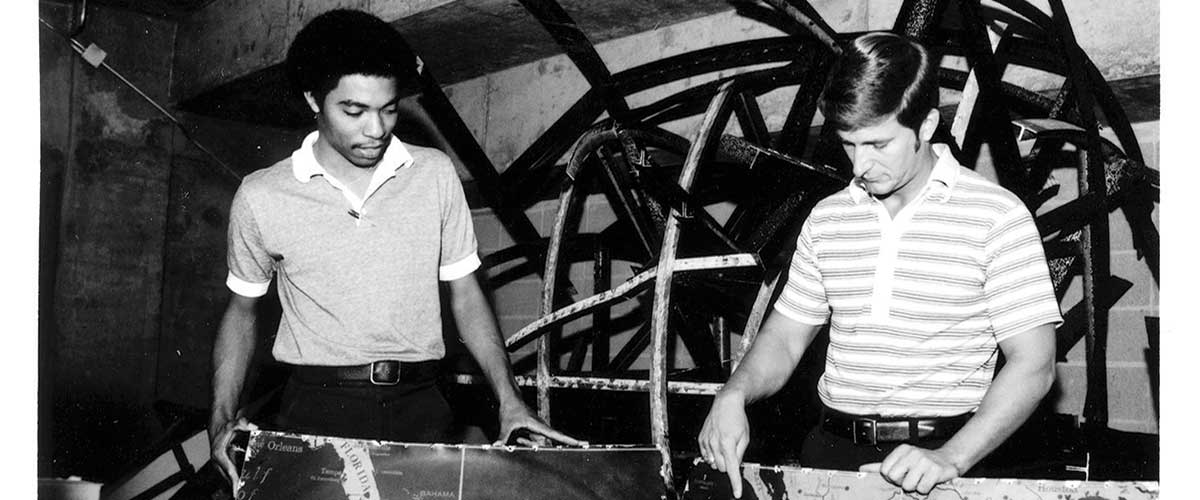The Wandering Globe
Posted on May 30, 2025 by Alumni

When Dr. Bill Williams first saw the pieces, he thought it might be the end of the world. Or at least the globe.
The 12-foot-tall rotating globe, made by Rand McNally, had spent 23 years in downtown Mobile’s Waterman Building. (Original cost: $37,915, equivalent to more than $500,000 today.) Dismantled in 1973, it ended up at the Mobile Municipal Auditorium (later the Mobile Civic Center).
Plans to display it fell through. To the rescue in 1978 came Alfred Archer ’79, a South geography minor and now a retired teacher in Cut Off, Louisiana, and Williams, an associate professor of geography and now director emeritus of the Alabama Power USA Coastal Weather Research Center. (Archer’s wife of 46 years, the former Ashley Balasco ’81, was one of South’s original Southerners in 1978.)
After they discovered the plight of the globe (neither today remembers how), Archer and Williams teamed to persuade the city to donate it to South. “So what we had to do was to go down and inspect it and have those dismantled parts transported to the University,” Archer says.
“Concern” was Williams’ first reaction: “In looking at the surface, I could see there was going to be trouble trying to keep the paint from peeling.”
South engineering lab technician Lanny McCormick reassembled the pieces after years of storage at the University. In 1999, the Mitchell Center opened — featuring the globe in the lobby. With its 1940s paint stabilized, it revolves majestically inside its original brass railing.
“Everybody wants to get a photograph with it,” Williams says. “It has more attention now than it ever got down in the Waterman Building.”
Mural Man
The Waterman Globe originally had a striking setting. Commerce-themed murals graced the lobby walls of the downtown Mobile high-rise built for the Waterman Steamship Corp. — and still do, although the space is currently vacant. Constellations decorated the domed ceiling. Two full-time guides showed off the decor for visitors and school field trips.
Conrad Albrizio, the artist, lived for several years in New Orleans and taught art at Louisiana State University from 1936 until 1954. He created public murals across the South.
Carolyn Bercier, in her 2019 book “The Frescoes of Conrad Albrizio,” describes the Waterman frescoes and his Louisiana history murals in the New Orleans train station (1954; restored in 2016) as his masterworks.
In the 1950s, Albrizio switched from frescoes (paint on wet plaster) to mosaics (inlaid bits of colored stone or glass) as a better fit for the angular lines of modern buildings. He created the “Mardi Gras” and “Circus” mosaics (1965) for what became the Mobile Civic Center (see page 44) and the “History of Medicine” lobby mosaic (1966) for Mobile General Hospital, now USA Health University Hospital.
He also made a mother and child mosaic for the old downtown YWCA building that burned in 2001 and a law and justice-themed mosaic for the old Mobile County Courthouse (both 1958). The latter now decorates Mobile Government Plaza.
Click here to view the current issue of South Magazine


